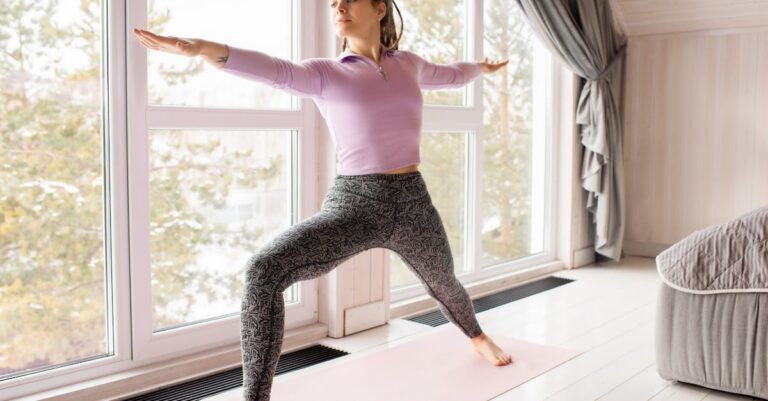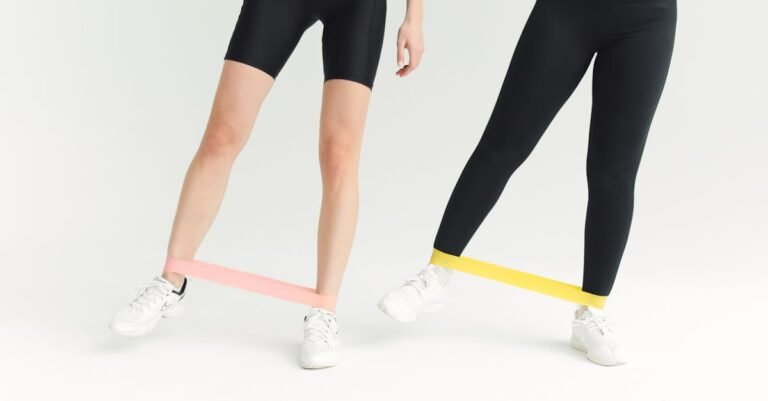So, you wanna start moving your body more at home, which is awesome! But then you hit a wall: Pilates or Yoga? They both look kinda similar sometimes, with mats and focused movements, and everyone seems to be doing one or the other. It feels confusing, right? You just want something that works for a beginner, doesn’t need a ton of gear, and actually helps you feel better. Don’t sweat it! By the time you finish reading this, you’ll get the lowdown on both Yoga and Pilates, understand how they feel different, what they’re best for, and figure out which one might be your perfect match for starting your home fitness journey. Let’s clear things up!
What’s the Big Idea? Yoga vs. Pilates Basics
Okay, let’s break ’em down. Think of Yoga as the super old, wise grandparent of mindful movement. It’s been around for thousands of years and is all about connecting your mind and body. You’ll typically move through different poses, called asanas, and really focus on your breathing. The big goals? Becoming more flexible, finding balance, and calming your mind. It’s kinda like learning a smooth dance routine where you hold certain shapes, breathe deeply, and try to stay present in the moment.
Pilates, on the other hand, is like the younger, energetic cousin, created in the early 20th century by a guy named Joseph Pilates. Its main game is building strength, especially in your core – that’s your tummy, back, and hip muscles all working together. Pilates involves really precise, controlled movements, often focusing on smaller muscle groups. The breathing is specific too, designed to help you engage those deep core muscles. Imagine trying to build a super strong foundation for a house, right from the center outwards – that’s kinda like Pilates for your body.
The Feel Factor: How Do They Actually Feel Different?
This is where you really notice the difference. A Yoga session often feels like a flowing journey. You might move smoothly from one pose to another (this is often called a ‘flow’ or ‘vinyasa’), or you might hold stretches for a bit longer, really feeling them open things up. There’s a big emphasis on your breath guiding the movement, and classes often end with relaxation or a little meditation. Depending on the style, it can feel super relaxing, like a gentle wake-up stretch, or pretty challenging, making you sweat! Think of that satisfying feeling when you stretch really high after sitting for ages.
Pilates tends to feel more focused and, well, controlled. You’ll be concentrating hard on making small, exact movements and keeping your core muscles pulled in tight (imagine gently tightening a belt around your middle). You might repeat an exercise several times to really target a specific muscle group. It might not always feel like a big, sweaty workout (though it can be!), but you’ll likely feel muscles working, sometimes tiny ones you didn’t even know existed! It’s like trying to balance a book on your head while walking – it requires focus and steady control.
Gear Up! What Stuff Do You Need?
Good news for home beginners! Both are pretty easy to start without needing a garage full of equipment.
For Yoga, the main thing you’ll want is a yoga mat. This gives you cushioning and stops you from slipping. That’s pretty much it to get started! As you get more into it, you might want things like yoga blocks (to help bring the floor closer in certain poses) or a strap (to help deepen stretches), but they’re definitely not must-haves right away. Super simple!
For Pilates, specifically mat Pilates (which is perfect for home), you also just need a mat! A Pilates mat is sometimes a bit thicker than a yoga mat for extra cushioning on your spine, but a yoga mat works fine too when you’re starting out. While you might see fancy machines called ‘reformers’ in Pilates studios, you absolutely don’t need one for an effective home workout. Some online classes might suggest using small props like resistance bands or a small inflatable ball later on, but you can get a great workout with just your body and the mat.
Main Goals: What Are You Trying to Achieve?
Thinking about *why* you want to start can help you choose.
Yoga really shines if your main goals are:
- Increasing flexibility: Want to touch your toes or just feel less stiff? Yoga’s great for that.
- Improving balance: Many yoga poses challenge your stability.
- Reducing stress and anxiety: The focus on breath and mindfulness is super calming for many people.
Let’s imagine Sarah (just a made-up example!). She sits at a computer all day for work, feels tight in her shoulders and hips, and often feels frazzled by the end of the day. Starting gentle Yoga at home helps her stretch out those tight spots and gives her a dedicated time to breathe and calm her mind.
Pilates might be your winner if you’re aiming for:
- Building core strength: This is Pilates’ superpower! A strong core helps with posture, stability, and can even reduce back pain.
- Improving posture: By strengthening your core and back, Pilates helps you stand and sit taller.
- Muscle toning: Pilates creates long, lean muscle tone rather than bulk.
- Injury prevention/rehab: The controlled movements and focus on alignment make it popular for preventing injuries or recovering from them safely.
Think about Mark (another fictional friend!). He sometimes gets annoying little back twinges, maybe from lifting something awkwardly, and wants to feel stronger and more supported in his daily activities. Doing mat Pilates at home helps him build that deep core strength to support his back and move with more confidence.
Ouch Factor: What About Injuries or Limitations?
Safety first, right? Both practices are generally safe for beginners when you listen to your body, but there are a few things to keep in mind.
With Yoga, some poses can put pressure on your wrists (like planks or downward-facing dog) or knees (like deep lunges or lotus pose). If you have existing joint issues or back pain, it’s important to let your instructor know (even in an online class, there might be modification options) or look for beginner or gentle yoga classes. The key is never push into sharp pain and modify poses so they feel right for your body. Don’t worry about looking like the person next to you (or on the screen)!
Pilates is often praised for being low-impact and focusing on controlled movements, which is why it’s frequently used in physical therapy settings. It’s great for building strength without stressing the joints. However, learning the correct form, especially how to engage your core properly without tensing your neck or straining your back, is super important. Starting with beginner classes will help you nail the basics safely. Like yoga, always listen to your body and don’t do anything that causes pain.
Making the Choice: Which One Is *Your* Best Bet?
Okay, decision time! Let’s quickly recap: Yoga is awesome for flexibility, balance, and chilling out your mind, often feeling flowy. Pilates is fantastic for building core strength, improving posture, and precise muscle control, feeling more focused.
Honestly? The best way to know is to try both! Seriously. Most online platforms or apps offer beginner classes for Yoga and Pilates. Give each one a try for a week or two. See which one feels better in your body. Which one do you actually *look forward* to doing (or at least don’t dread)?
Ask yourself: What’s my main goal right now? If it’s mainly to de-stress and get bendier, maybe start with Yoga. If it’s all about building a rock-solid core and standing taller, give Pilates a shot first.
Remember, the most important thing isn’t picking the “perfect” workout, it’s finding something you enjoy enough to stick with. Showing up consistently is where the real magic happens! And hey, there’s no rule saying you have to choose just one forever. Lots of people enjoy doing both Yoga and Pilates!
So, we’ve unpacked the basics of Yoga and Pilates for beginners doing their thing at home. We looked at how Yoga often focuses on flexibility, flow, and calming the mind, usually needing just a mat. Pilates zeroes in on core strength, control, and precise movements, also totally doable on just a mat. Both are generally safe and great low-impact options, though listening to your body is key. Choosing between them really boils down to your personal goals – are you chasing zen and flexibility, or core power and posture? Trying out beginner classes in both is the best way to see what clicks for you. Don’t overthink it; just start moving and see what feels good!










